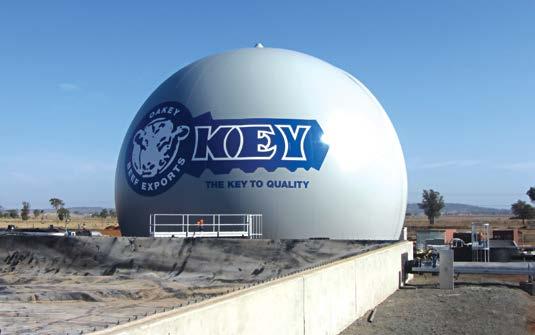INNOVATIVE SOLUTIONS
Thermal insulation barrier provides corrosion protection and “cool-to-touch” properties Industries and facilities around the world face challenges linked to the maintenance of pipework, tanks, and vessels. Damage and deterioration of pipes, valves and fittings are a widespread problem and occur due to corrosion, erosion, thermal cycling, and chemical attack. In order to save energy costs and reduce waste, companies are recognising the importance of insulating their equipment to prevent heat loss and increase efficiency, however, this creates another issue, corrosion under insulation (CUI). CUI is a major issue which occurs on equipment operating in low, ambient, and high-temperature environments. The role of insulation for heat conservation is crucial, but also shielding personnel from burns when working with hot machinery and equipment is extremely important as metallic surfaces at ≥ 60°C can lead to hot burns when touched. Moreover, equipment operating in low temperatures and sub-zero conditions can result in ice-build-up, condensation and dripping of water, increasing slipping hazards and provoking ice burns when handled at < 0°C. In this case, it is essential that the insulating material possesses anti-icing properties.
28
Waste + Water Management Australia | March/April 2020
Various solutions are available in the market such as traditional insulation, barriers or guards and water-based coatings. However, individually, they do not hold all the requirements to insulate machinery and equipment whilst also providing corrosion prevention and personnel protection from potential contact burn injuries. It is for that reason that Belzona has developed an innovative, two-component, polymeric, solvent-free system - Belzona 5871. This multi-functional material provides thermal insulation and corrosion protection, whilst improving safety, efficiency, and durability of the industrial equipment all in a single product. Belzona 5871 is designed to be applied onto metal pipework, ducting, tank/vessel externals, and other industrial equipment. It is thermally insulating and improves efficiency whilst also preventing contact burn injuries, condensation, and icing. It can be applied by brush, cartridge, or heated airless plural spray which is ideal for small, complex geometries or rapid application over large areas, offering a fast return to service and high film build with potentially just one layer of product. Upon application, the product forms a lightweight, high-build closed-cell foam. Due to the foaming epoxy technology, Belzona
5871 expands up to three times its applied thickness e.g. 1mm applied gives 3mm cured thickness, thus increasing the amount of product on the surface. Furthermore, Belzona 5871 is a solvent-free corrosion barrier, eliminating the need for any additional primer or top-coats, reducing the number of layers needed compared to conventional coating solutions. Overcoat times are up to 24 hours irrespective of temperature or humidity providing application flexibility. The cure speed and reduced number of layers required, ensure a fast return to service. To test the thermal barrier properties, comparison between a section of uncovered steel substrate and a section of substrate protected with Belzona 5871 was carried out to determine the thickness required to reduce the surface temperature to below 60°C (140°F) as required by ASTM C1055 to prevent contact burn injuries. For example, Belzona 5871 applied at a thickness of approximately 2.2mm to give a cured thickness of 6.6 mm, will reduce the surface temperature from 120°C (248°F) to below 60°C (140°F). Belzona 5871 is insulating and capable of reducing heat transfer thus providing a safe to touch surface and preventing contact-burn injuries. The insulating properties of Belzona 5871 were confirmed using the Lee’s disc method giving a low thermal conductivity of approximately 0.1 W/m.K. Several tests have been carried out to confirm the corrosion resistance of the Belzona 5871 system. CUI conditions have been simulated using heated pipe sections. The system was repeatedly cycled between 120°C (248°F) and 10°C (50°F) over a period of 1000 hours with alternating wet (with a constant deluge of water at 5 litres per minute) and dry periods. Following the test, the multi-layered systems did not show any blistering, delamination, or cracking and there was no evidence of corrosion.










